Nihari is not just a regular dish; it is an embodiment of history, royalty, and cultural significance. It is a rich and spicy stew made from slow-cooked meat and bone marrow. Nihari has been a favorite dish of many people who love deep and aromatic flavors and a royal taste. Nihari origin can be dated back to the Mughal era, and since then, it has continued to inspire the palate of people.
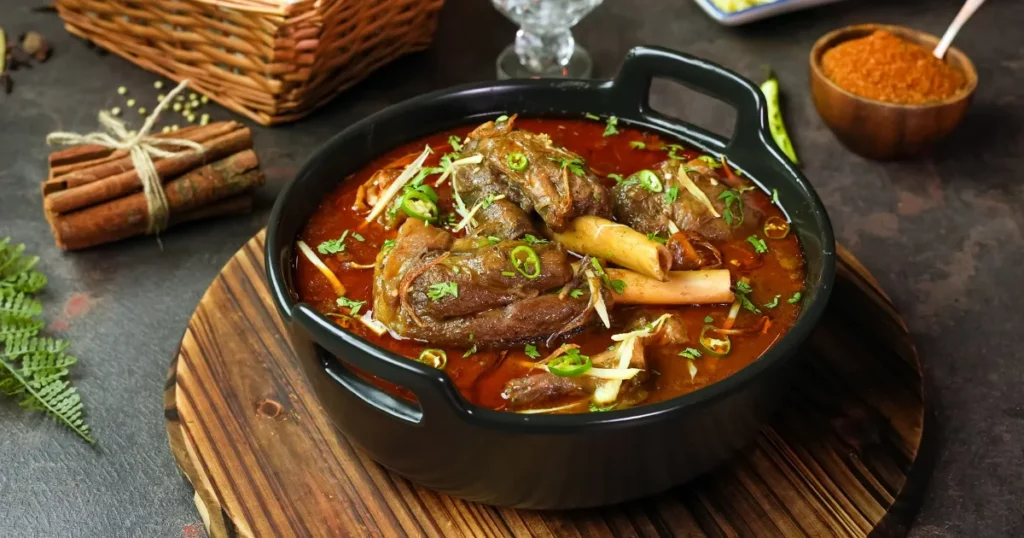
It is traditionally prepared with beef or lamb, slow-cooked overnight, and flavored with a mix of hand-pounded spices. Since this dish requires immense patience and precision, it is often connected with heritage and deep-rooted tradition.
Nihari’s Royal Origins – Born in the Mughal Era
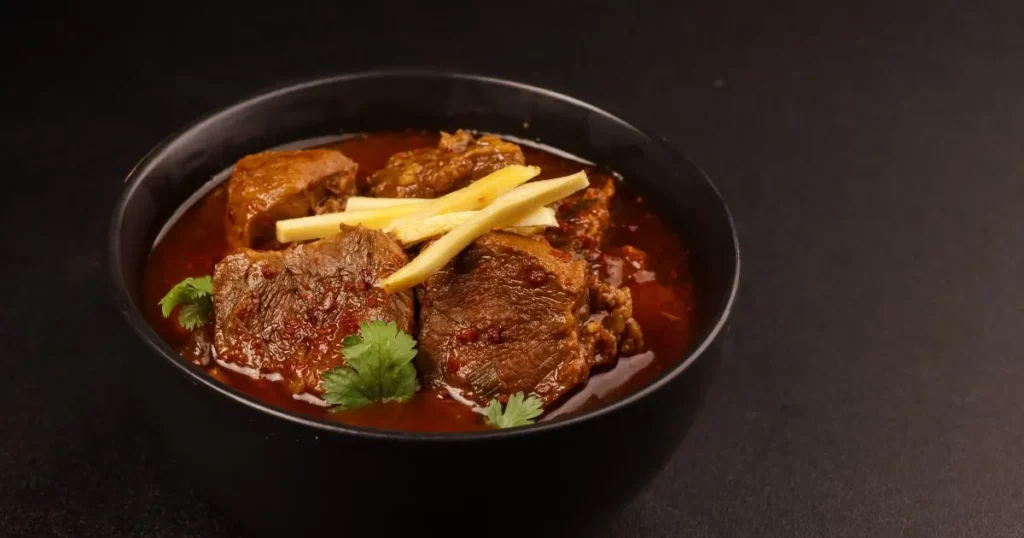
Nihari origin can be traced to the lavish kitchens of the Mughal Empire, specifically within the courts of the Nawabs of Delhi and Awadh (present-day Lucknow). It is believed that Nihari was developed during the late Mughal period in the 18th century, a time when the art of cooking was deeply intertwined with royal protocol and daily ritual.
The word “Nihari” is derived from the Arabic word “Nahar,” meaning “morning.” In keeping with its name, Nihari was traditionally served to Mughal kings and warriors early in the morning after their Fajr (dawn) prayers. As legend goes, it was designed as a hearty, restorative meal meant to energize noblemen and soldiers for a long day ahead. It is deeply nourishing as the meat is cooked overnight with the bone marrow.
In these Nawabi kitchens, Nihari was more than food; it was a symbol of luxury, strength, and the intricacies of Mughlai gastronomy. Every ingredient was carefully selected, every spice finely balanced, and every pot allowed to simmer until the marrow melted into the stew, creating a velvety, collagen-rich texture that defines authentic Nihari to this day.
How Nihari Spread Across India and Pakistan
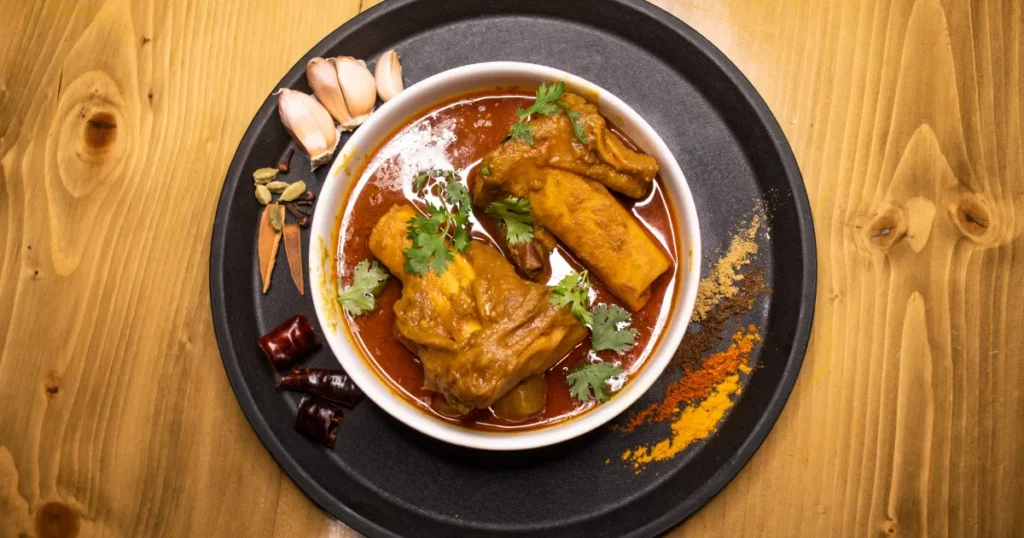
While the history of Nihari says that it originated in elite Mughal circles, its journey to the masses is as remarkable as its flavor. With the Partition of India in 1947, large-scale migration led to cultural and culinary exchanges that reshaped food habits across borders. Nihari was one such dish that traveled with the Muslim community migrating from Delhi and Lucknow to newly formed Pakistan, particularly to Karachi and Lahore.
In Karachi, Nihari evolved in street-side eateries and small restaurants. What was once a royal breakfast became an affordable delicacy served to laborers and commoners, especially in the early morning hours.
Back in India, cities like Lucknow continued to preserve and evolve Nihari recipes, adapting them with regional spices and techniques. Gradually, the dish broke free from its royal identity and entered everyday Muslim households, particularly in northern India. Its bold flavors and comforting warmth helped it become popular during winters, special occasions, and religious festivals.
Today, Nihari is no longer confined to Muslim or Nawabi circles. Its reputation has spread far and wide, and it is featured on the menus of gourmet restaurants, food festivals, and even global cooking shows. It’s a dish that connects the past with the present, tradition with taste.
Cultural Importance of Nihari Today
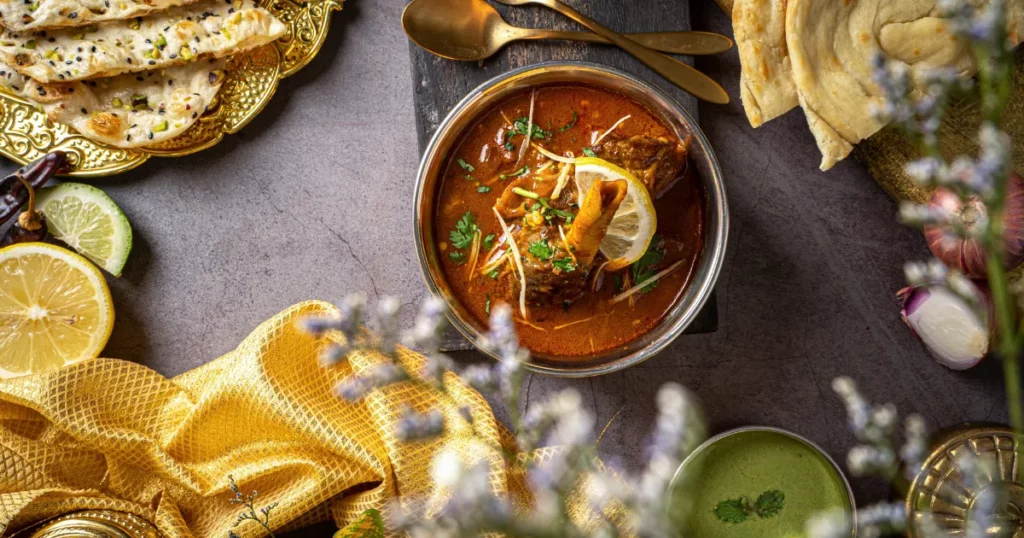
In modern South Asian culture, Nihari occupies a space that blends nostalgia with celebration. It is traditionally served during significant Islamic festivals such as Eid-ul-Fitr and Eid-ul-Adha, and is especially cherished on Jummah (Friday) mornings as a part of family gatherings and communal prayers.
During these occasions, pots of Nihari bubble away in kitchens from early morning, filling homes with the intoxicating aroma of cloves, cinnamon, bay leaves, and slow-cooked meat. It’s typically eaten with naan or khameeri roti, with accompaniments like ginger slivers, lemon wedges, and fried onions—each bite creating a perfect harmony of spice and soul.
Nihari also holds a seasonal significance. As the weather turns cold, people crave warming foods—and there is nothing quite as comforting as a hot bowl of Nihari. It not only warms the body but stirs memories of winter mornings, layered blankets, and breakfast shared with loved ones.
In the culinary world, Nihari is more than just food; it’s a cultural artifact. It stands as a proud representative of Mughlai and North Indian cuisine. Chefs and food historians regard it as one of the finest examples of Indian slow-cooking techniques, offering a rich historical context along with its robust taste.
From Nawabi Kitchens to Your Doorstep—Order Nihari on Swiggy
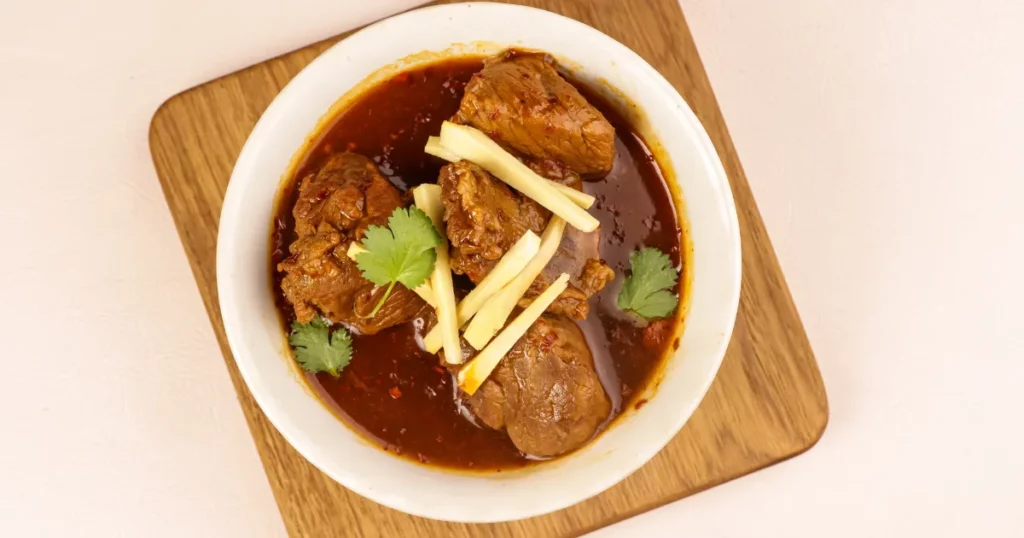
Thanks to Swiggy, the experience of relishing Nihari is no longer limited to homemade or restaurant visits. With just a few taps, you can order Nihari online and enjoy authentic Nihari delivered to your doorstep.
Whether you’re celebrating a special occasion, longing for comfort food, or simply indulging your culinary curiosity, Nihari is now more accessible than ever. Many restaurants offer traditional recipes passed down through generations, while others put a modern twist on this age-old classic.
You don’t have to slow-cook for eight hours to taste history, Swiggy’s food delivery brings royal indulgence straight to your plate.
Conclusion
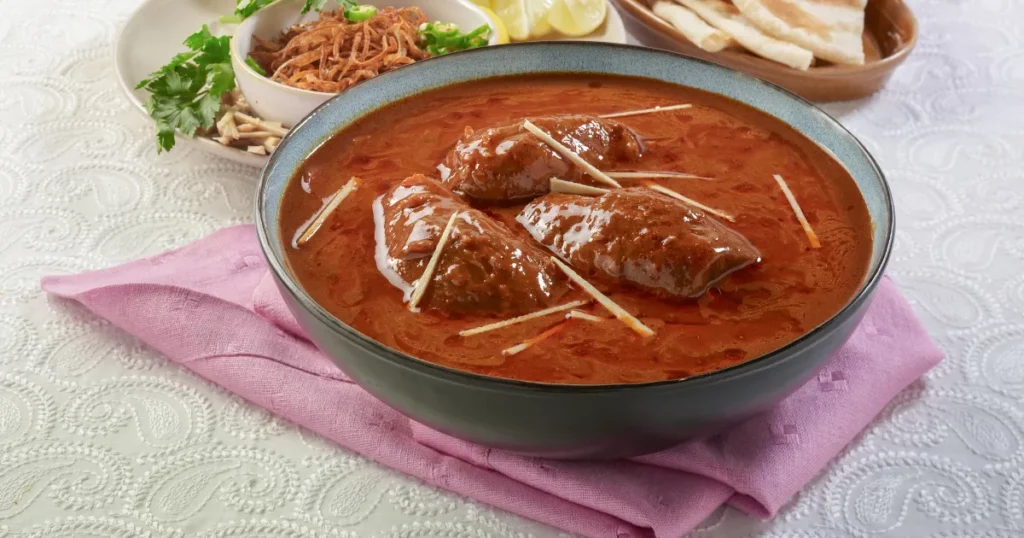
Nihari’s journey, from royal kitchens to street stalls, from Delhi to Karachi, and from tradition to innovation—makes it one of the most iconic dishes in South Asian cuisine. What began as a Mughal morning ritual has become a beloved staple, revered for its depth, flavor, and historical charm.
Whether you’re a seasoned Nihari lover or a first-time taster, one thing is certain: this dish doesn’t just feed your stomach, it nourishes your soul with a story that’s centuries old.
FAQs
1. What does the word ‘Nihari’ mean?
The term “Nihari” is derived from the Arabic word Nahar, meaning “morning.” Historically, it was consumed in the early hours of the day, especially after the dawn (Fajr) prayer. Its role as a morning meal was linked to its richness—ideal for energizing warriors and nobles for the day ahead.
2. Which Mughal cities are associated with the origin of Nihari?
Nihari is most strongly associated with the Mughal centers of Delhi and Awadh (present-day Lucknow). These cities were once epicenters of Mughal rule and culture, and their kitchens were known for inventing and refining elaborate dishes like biryani, kebabs, and, of course, Nihari.
3. Why is Nihari traditionally eaten in the morning?
Nihari was designed to be a power-packed breakfast dish. Its slow-cooked meat and marrow provided sustained energy for warriors and laborers. In royal courts, it was also part of a ritual morning meal—deeply nourishing, medicinally warming, and spiritually fulfilling, aligning with post-Fajr routines.
4. Is Nihari served only during festivals?
No, while Nihari is a common dish during festivals such as Eid and other religious occasions, it is also enjoyed as a regular meal in many households, especially during the winter season. In Pakistan and parts of North India, it’s often found in weekend breakfasts, Sunday brunches, and even late-night dining options.
Author Bio
Satisfying your cravings, one bite at a time. Discover the best eats, trends, and uncover the hidden gems with us to make your online ordering or dining experience a memorable one.



















































































